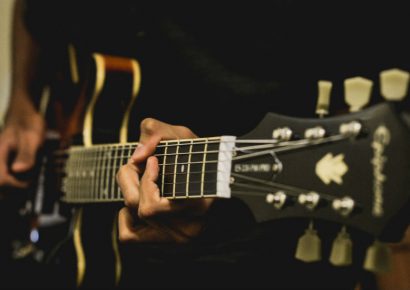I remember having a lesson as a teen with my first drum teacher. Along I came to my lesson with the one pair sticks I owned (and had trashed) but I actually happened to have a cheap set of nylon brushes in my bag – white bristles, black handles, little use. Sticks were the preferred weapon. When my teacher saw the brushes, he grabbed them, fanned them out and had a play on the drums. He commented, “…these are pretty cool”. I replied with a typical inexperienced and undignified response. “I don’t reckon, they’re just something I never use. Not very loud. Why are they cool?”. The reply came with a little grin, “you’ll understand when you’re older”.
I clearly didn’t get it then, but as we know, experience is a wonderful thing and I did get it when I was older. Brushes aside, it took me a while to truly understand the sonic variations available from using the same instrument but different stick options. My stick bag has changed many times over the years but here’s what’s getting the job done these days.
Drumsticks
Every stick offers a different playing experience, every player is different but for me, feel and weight are fairly consistent amongst my sticks. The key difference though is in the tips. Really, the shape of the tip is the first thing that gives you an instant contrast in sound. Small round tip, larger oval, wood or nylon you can get a vast amount of different tones. Cymbals can be vastly transformed with a different stick. Take a Jazz ride for example – light and washy. You can find additional stick definition from a small bead type tip and great control to accompany. I’ve literally bought a cymbal based on how it sounded from one stick to another. So, for me I have at least two pairs of different tipped sticks that cater for general playing and more delicate Jazz type applications. Ball tips provide clarity and are my preference.
Mallets/Brushes
Orchestral background or not, having a set of mallets in the bag is never a bad idea. The obvious use that comes to mind is cymbal rolls and these are great in ballads, delicate endings, build ups etc. Sometimes however, we need to recreate orchestral type instruments on the drums – think Timpani or bass drums and a couple of mallet types is useful for this. I have a softer, more woolly set that have a very soft attack and another that are slightly harder that are great for cymbal rolls and allow the cymbal to open up a little faster when required. Versatile.
Brushes are another highly underrated sound creator on the drums. Perhaps a forgotten art, sometimes sticks just don’t cut it and brushes offer something more – something extra. But not all brushes are created equal. Whether it be my old nylon vibes or the steel variety, there’s thicker and less flexible option, which yield more attack and projection or super light for the opposite. Both are in my stick bag. Brushes also offer the unique ability to create a sustained sound with one hand that can fill in the space around the notes, creating a platform for everything else to play over. Brushes can also be loud when used correctly and as such, a lighter variety can be useful in the right setting. You can also get creative and go down the wooden/reed type variety of brush too – think small broomsticks. These give a wonderfully fat, warm vibe and I’ve used them on many recordings. Hot Rods or dowel type sticks offer a lower volume experience and allow the player to hit at a normal velocity without the hassle of being too loud but for me, the clarity that comes from a stick is never matched so the advice during my youth was to, “learn to play softer.” Each to their own though!
Auxiliary
By far the most commonly used things I carry in my bag that isn’t a stick, brush or mallet are my ‘sizzle’ options. Recreating rivets in a cymbal, I use a metal variety of chain for opening/closing blinds. Creating a loop at one end enables me to quickly place on a cymbal to create a great sizzle sound that performs in a similar way to the sustained brush sound. I suddenly have a layer I can work under. You can experiment with thicker chains – the old cabasa chain trick works well or different lengths gives shorter or longer sustain. This sound works great too on cymbals that aren’t as light as you’d like.
This is the tip of the iceberg but what works for me most of the time. Of course, there are so many other options – music dictates variation, but a good selection of sticks, brushes mallets and accessories is a solid foundation to be gig ready.
Revisit last month’s drum column here.

